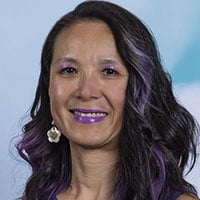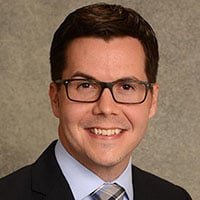A multi-institutional research project led by immunology researchers from the University of Colorado Anschutz Medical Campus will focus on underlying disease mechanisms of inborn errors of immunity (IEI), which could ultimately help uncover therapies for these high-risk patients.
IEI are rare and often life-threatening immune system disorders that result in infection susceptibility, inflammation, autoimmunity, allergies, and/or cancer. To date, nearly 500 IEI have been identified and described, and the list continues to grow as clinical phenotypes are better defined.
The research is funded by a $250,000 pilot grant awarded by the Sanford Children’s Genomic Medicine Consortium to co-principal investigators Elena Hsieh, MD, associate professor of immunology and microbiology and pediatrics, and Cullen Dutmer, MD, associate professor of pediatrics-allergy/immunology, both at the CU School of Medicine.
Both Hsieh and Dutmer provide care at the Allergy and Immunology Center at Children’s Hospital Colorado and conduct basic science research focused on understanding and characterizing the dysregulated immune responses that govern inflammatory complications in IEI.
Whole genome sequencing to address an unmet need
The project aims to identify novel genetic defects and unique clinical phenotypes for known IEI using whole genome sequencing (WGS). The grant will allow WGS for up to 25 patients with suspected IEI, with samples provided from the consortium’s 10 member children’s hospitals, including Children’s Hospital Colorado.
“With anything rare, IEI are difficult to study and diagnose,” Hsieh said. “If you don’t know what it looks like because it’s not well understood or hasn’t even been discovered yet, it’s difficult to arrive at the diagnosis.”
Due to the varied clinical phenotypes of IEI, there has not been a direct path for diagnostic investigation following a patient’s often puzzling onset of symptoms. Patients may visit several specialists and subspecialists and undergo multiple tests before eventually being diagnosed (or worse, a definitive diagnosis is never reached).
“In cases where a diagnosis is reached, the lengthy delay from the onset of symptoms to the eventual identification of an underlying etiology translates to suboptimal clinical management and at times harmful medical interventions,” Hsieh added.
WGS utilizes a technology that allows for expansive sequencing of genes. Unlike single gene sequencing, tailored gene sequencing panels, or whole exome sequencing (WES), WGS incorporates essentially all of an individual’s genetic material. This methodology not only allows for discovery of mutations in genes previously unassociated with IEI, but also provides an approach to expand the clinical phenotype and characterization of known IEI.
“Even though IEI are rare, they are under-recognized,” Dutmer said. “When we diagnose an individual with an inborn error of immunity, it can significantly influence how we treat them, and it may also inform us about their prognosis.”
A multi-disciplinary, multi-institutional effort
The project leverages the expertise of consortium members in immune system characterization, genomics and variant analysis for timely and expert interpretation of WGS data. One of the expected outcomes of the current research is the development of a multi-institution model to identify and study IEI, building on collective clinical and basic science immunology knowledge.
“If you are trying to study rare diseases, it is very hard to concentrate on just one institution, even if you are a regional or national referral center like we are at Children’s Colorado,” Hsieh said. “The more institutions you can pull together, the higher your chances to make an impact.”
Several of the member hospitals have already identified patients with clinical histories and preliminary diagnostic evaluations highly suggestive of IEI, but a definitive diagnosis has not yet been achieved. Patient samples have been submitted for a wide range of ages, from infants to young adults, and more samples are expected over the coming months.
Once a patient is selected for the study, WGS is performed on samples from the patient and both parents (if available) as a trio to improve diagnostic yield. Sequenced samples are then analyzed at Rady Children’s Institute for Genomic Medicine in San Diego.
Combing data for meaningful clues
“WGS casts a wide net. We must then comb through the massive amount of data to find things that are meaningful,” Hsieh said.
Genetic mutations identified in this project’s sequenced cases have led to definitive diagnoses; however, patient confidentiality prevents specifics from being shared. Diagnosed patients will receive a therapy plan from their referring institution and begin an individualized treatment regimen.
If WGS identifies variants of uncertain significance, samples may be sent for clinically available immune diagnostic studies or research-only validation assays, including T-cell receptor signaling and cytokine signaling, performed in Hsieh’s lab.
The long game: driving better outcomes
Dutmer believes this kind of innovative genomic medicine research offers great potential for clinical application of personalized care.
“I have hope for improved patient outcomes. We’ve had several cases where we wished the outcome had been different, and we did our best, but the therapeutic interventions we tried weren’t successful,” Dutmer said. “The more we can fine tune our treatment strategies, the better our outcomes will be.”
In addition to improving prognosis and treatment for these patients, Hsieh is optimistic that the research will help shine light on rare diseases.
“I hope our work leads to improved awareness for rare pediatric immune diseases,” she said. “For a parent, it can be isolating because you may have to move your family to be closer to specialized care for your child. There’s not an immediate ‘light bulb’ of understanding or support from others.”
Guest contributor: Jessica Ennis is a writer specializing in healthcare and science.





